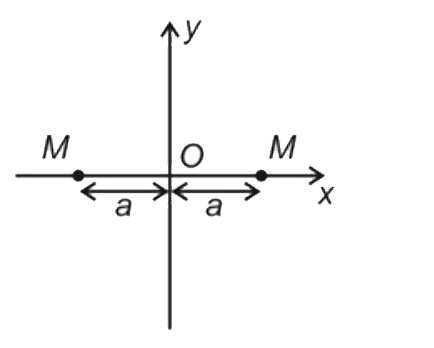A body of mass M is moving with a uniform speed of 10m/ s on frictionless surface under the influence of two forces F1andF2 . The net power of the system is

10F1F2M
10(F1+F2)M
(F1+F2)M
Zero
The correct Answer is:D
Speed = constant
Work done = 0, P = 0.
Topper's Solved these Questions
- WORK, ENERGY POWER AND COLLISIONBOOK - ERRORLESSCHAPTER - WORK, ENERGY POWER AND COLLISIONEXERCISE - NCERT BASED QUESTIONS (Elastic and Inelastic Collision)
44 Videos
- WORK, ENERGY POWER AND COLLISIONBOOK - ERRORLESSCHAPTER - WORK, ENERGY POWER AND COLLISIONEXERCISE - NCERT BASED QUESTIONS (Perfectly Inelastic Collision)
9 Videos
- WORK, ENERGY POWER AND COLLISIONBOOK - ERRORLESSCHAPTER - WORK, ENERGY POWER AND COLLISIONEXERCISE - NCERT BASED QUESTIONS (Conservation of Energy and Momentum)
64 Videos
- WAVES AND SOUND BOOK - ERRORLESSCHAPTER - WAVES AND SOUND EXERCISE - ASSERTION & REASON
25 Videos
Similar Questions
Knowledge Check
A body of mass 1kg is moving with a uniform speed of 1m/s in a circular path of radius 1m. The external force acting on the body is
A1NB1 dyneC1JDzeroA body of mass 1 kg is moving towards east with a uniform speed of 2m/s. A force of 2N is applied to it towards north. The magnitude of the displacement of the body 2s after the force is applied is
A4 mB4√2mC8 mD8√2mA body of mass 10 kg is moving in a circle of radian 1 m with an angular velocity of 2rad/s the centripetal force is
A10 NB40 NC30 ND20 N
A 5 kg block moves in a straight line on a horizontal frictionless surface under the influence of a force that varies with position as shown in the figure. Find the work done by this force as the block moves from the origin to x = 8m.

View SolutionA body of mass m, moving with a uniform velocity of 30ms−1 collides with another body of mass m2 at rest and then the two together begin to move with a uniform velocity of 20ms−1. The ratio of their masses (m1m2) is
View SolutionA body of mass m moving with a uniform velocity of 40ms−1 collides with another body of mass m, at rest and then the two together begin to move with a uniform velocity of 30ms−1 The ratio of their masses (m1m2) is
View SolutionTwo point masses M are kept fixed on the x-axis at a distance a from the origin, another point mass m is moving in a circular path of radius R (in y - z plane) under the influence of gravitational force of attraction, then speed of m will be (Assume no forces are acting on m other than the gravitational forces by two M)

View SolutionA particle of mass M moves with constant speed along a circular path of radius r under the action of a force F. Its speed is
View Solution
